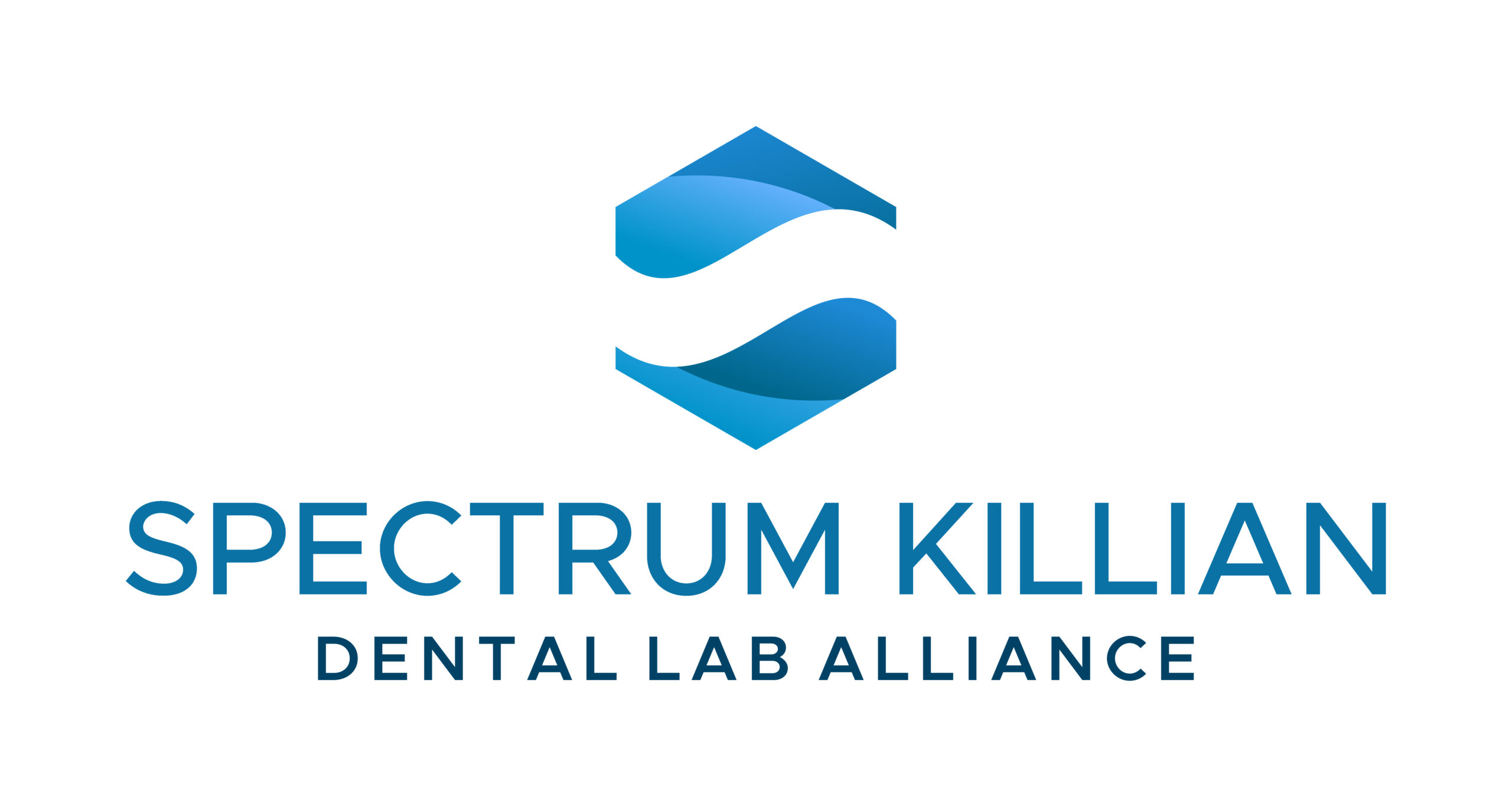Crown & Bridge Restorations
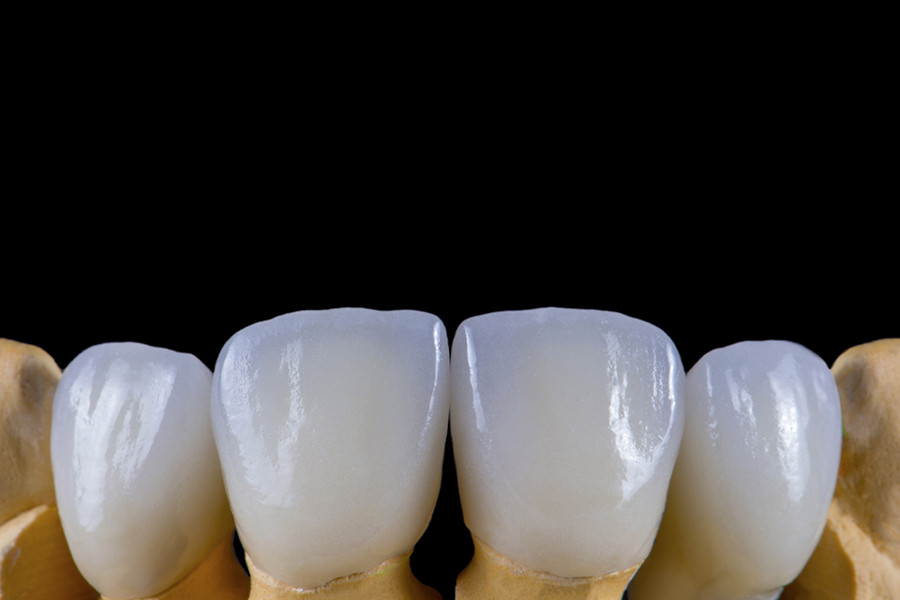
Porcelain Fused to Zirconia (PFZ)
Overview
Flexural strength of over 1,200 MPa, isostatically pressed Zirconia together with the highest rated Noritake CZR porcelain offers a unique combination of beauty and durability. Prescribe these restorations with confidence as we have found the durability of these restorations similar to PFM.
Read More
Advantages Of Porcelain-to-Zirconia Restorations
- Outstanding aesthetics
- High strength
- Versatility (Use anywhere in the arch)
Cementation
- Conventionally cemented
Indications For Porcelain-to-Zirconia
- Anterior: crowns and bridges
- Posterior: crowns and bridges
Strength
Mpa 1,200

IPS e.max
Overview
Ivoclar Vivadent IPS e.max and GC America GC Press. Both materials are relatively high strength ceramics (400 MPa for IPS e.max and 500 MPa for GC Press) that can be pressed as thin as .2 mm and come in a variety of opacities to provide excellent aesthetic results in a wide variety of clinical applications. Both IPS e.max and GC Press work well at a minimal thickness for veneers and equally well as full crowns, inlays, and onlays.
Read More
Advantages Of IPS e.max
- Natural translucency
- Strength
- Wear-compatibility
- Excellent margin adaptation
- Bio-compatibility
- Wide variety of restorations available
- Inlays and onlays
- Occlusal veneers, partial crowns
- Minimally invasive crowns (≥ 1 mm)
Cementation
- Adhesive bonding system
Indications for IPS e.max
- Anterior: crowns and veneers
- Posterior: crowns and inlays/onlays
Strength
MPa 500
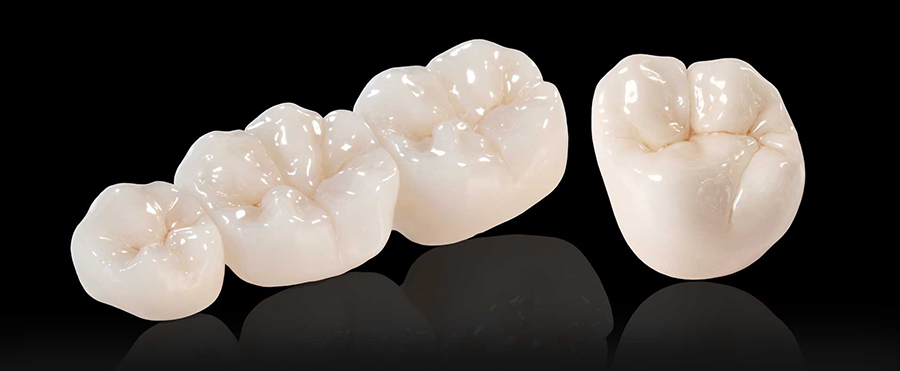
Monolithic Crown
Overview
Monolithic zirconia is intended to provide a durable, yet aesthetic alternative to posterior metal occlusal PFMs or cast gold restorations. The chip proof durability of a monolithic restoration is ideal for bruxers who have broken natural teeth or previous PFM restorations.
Read More
Advantages Of Monolithic Crown
Monolithic Crowns are particularly suitable for people who may grind their teeth because of its high strength. Only minimal clearance is required and there is low wear on opposing teeth. Solid zirconia is also very effective for masking highly discolored dental preps, specifically those that have darkened due to previous dental treatments, such as a post and core or a restored dental implant.
Cementation
Conventional cementation
Indications For Monolithic Crown
- Molar use and bridges
- Cementable over most dark stump shades
- Abutments with minimal bleed through
Strength
MPa 800-1100
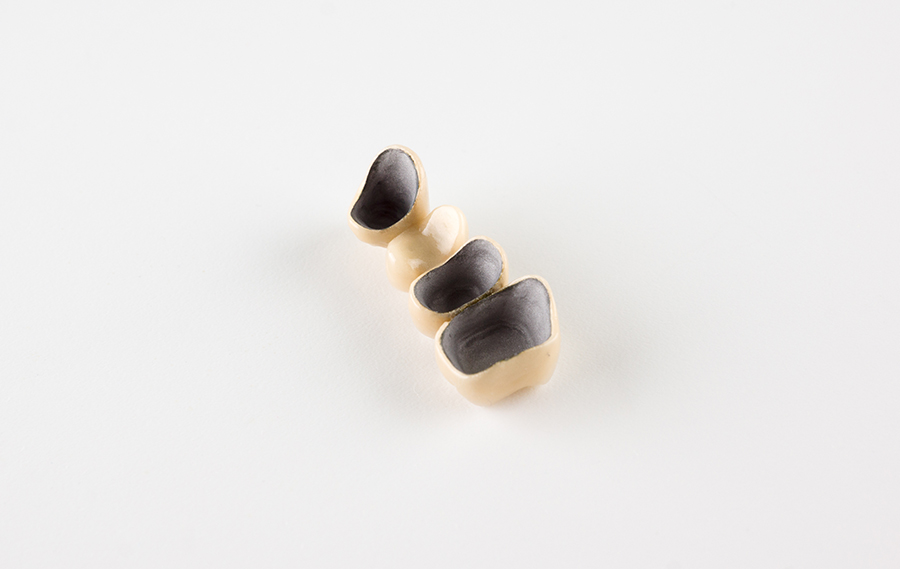
Porcelain Fused to Metal (PFM)
Overview
Porcelain fused to metal crowns and bridges is an excellent option for dentists who seek a restoration that combines both durability and vitality. The durable metal framework, which is designed for ideal porcelain support, provides strength similar to a natural tooth. We commonly layer 7 porcelain powders to achieve the natural vitality that our clients have come to expect. Porcelain fused to metal crowns and bridges are indicated for use with cast partials. Our PFMs are fabricated with top-quality Ivoclar high noble (yellow or white), noble or base alloy.
Read More
Advantages Of PFM (Porcelain Fused to Metal)
- Proven durability and performance
- Very aesthetic and vital (7 powder builds)
- Single unit to roundhouse bridges
- Conventional preparation guidelines
- Ideal in combination with cast partials or attachments
Cementation
- Conventional cementation
Indications for Porcelain Fused to Metal (PFM)
- Anterior: crowns and bridges
- Posterior: crowns and bridges
- Under Partials
- Attachments
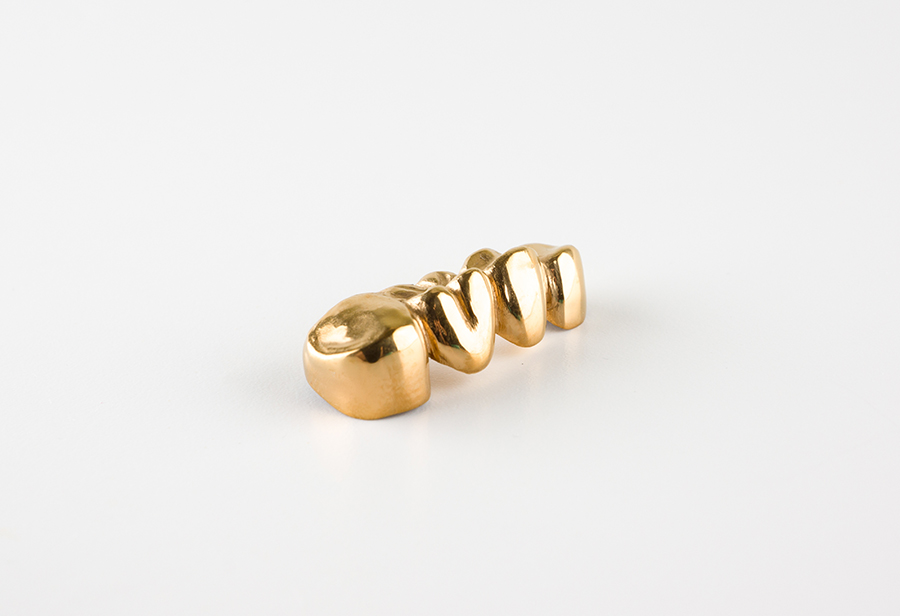
Full Gold Crown (FGC)
Overview
The yellow high-noble alloy has been the “Gold Standard” and preferred by doctors because of its longevity and functional success. High-noble crowns, bridges, inlays, and onlays remain a proven alternative to today’s tooth-colored options. High-noble gold is one of the most bio-compatible and non-toxic metals known to man, along with being both hypo-allergenic and non-corrosive. The margins of cast high-noble restorations are extremely accurate and do not break or chip. High-noble alloy’s coefficient of thermal expansion and rates of wear are very similar to enamel, providing optimal longevity and service. Moreover, FGCs can also be accomplished with less removal of tooth structure than with tooth colored restorations. This can leave the restored tooth healthier and stronger overall.
Read More
Advantages of Full Gold Crown (FGC)
- The most proven and durable crown or bridge restoration
- Hypo-allergenic
- Kind to opposing enamel
- Outstanding marginal fit
- Minimal tooth reduction is required
Cementation
Conventional cementation
Indications for Full Gold Crown (FGC)
Posterior: crowns, bridges, inlays and onlays
Monolithic Gold Restorations
Full Gold Crowns (FGCs) were the first monolithic restorations! They are fabricated entirely of a single metal alloy with no layering material to chip or debond. However, contrary to what the name implies, FGCs can be fabricated from alloys including Gold, Titanium, Platinum and Palladium alloy.
Contact Us
- Toll Free: (877) 528-2522
- Local: (951) 699-0435
- Fax: (951) 699-2226
- Email Nash Dental Lab


